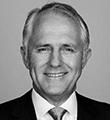Thank you very much and thank you Aunty Jannette for your welcome to country. To the families and loved ones gathered here today, their Excellencies, the Ambassadors of Indonesia, Thailand and Sri Lanka, the Leader of the Opposition the Honourable Bill Shorten, Chief of the Defence Force Air Chief Marshal Mark Binskin AC, Andrew Wood representing the Representing Commissioner Andrew Colvin, Malcolm Snow, CEO of the National Capital Authority (who were responsible for the development of the site) ladies and gentlemen.
Looking back on the tragic events of Boxing Day 2004, it is still hard to comprehend the magnitude of destruction. More than 230,000 lives were lost as the Indian Ocean tsunami sped from the earthquake’s epicentre, off the tip of Indonesia’s Aceh province, and unleashed its extraordinary power on the beaches and coves of Indonesia, Thailand, Sri Lanka and other nations in our region.
For those survivors who were there, and those whose loved ones were there, you comprehend it all too well.
Today, the Australian people provide — a permanent memorial to your experience; a place from which to draw strength; and a place where grief can, hopefully, give way to a commemoration of the precious moments you shared with those you loved and lost in the tsunami.
Joseph Giardina, who was in Phuket and lost his son, Paul, in the tsunami, was instrumental in the construction of this memorial.
As he said, he felt an overwhelming need for the names of the victims to be inscribed somewhere side by side. Thank you Joseph for your leadership in the developing this memorial.
To acknowledge that the 26 people who called Australia home may be buried in different places, but that their lives are forever bound through that one fateful moment.
Joseph’s tenacity has been remarkable in bringing this memorial here by the edge of the lake to life.
We cannot speak of the tragedy of the tsunami without speaking of those who responded with such courage and selflessness.
Today we have, represented here, some of the personnel and agencies who worked tirelessly on Australia’s largest peacetime operation ever launched overseas.
To members of the Australian Federal Police, our Defence Forces our Department of Foreign Affairs, we restate our thanks for showing Australia at its very best.
But today also reminds us just how dangerous this work can be. As we pay tribute to the nine Australian military and medical personnel who died when their Sea King helicopter crashed on Nias Island in Indonesia during rescue operations.
We remember them and we send our thoughts and love to their families. I want to congratulate Darryl Cowie on the magnificent design of this memorial. It is understated. It’s tranquil and a very deliberate contrast to the destructive heartbreaking violence of Boxing Day 2004. I thank Darryl and everyone involved in making this memorial a reality.
To the survivors and those who lost loved ones, I know you have carried the burden of being the national memory of this incredibly cruel and sad event.
Now we have a place where we can reflect on these events, reflect on Australia’s contribution, reflect on Australia’s lost. But above all reflect on the love for those that were lost, and those our servicemen and women, our diplomats, our aid workers, cared for in the aftermath.

